STI TIDA Frequency Comb
Overview
Technology Innovation Development Award (TIDA) from Science Foundation Ireland (SFI) and Enterprise Ireland (EI). A fund to enable researchers to produce novel technologies for commercialisation and to realise greater economic impact from state investments in research.
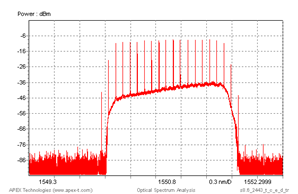
Frequency comb sources are a promising tool for spectroscopic absorption detection of multiple trace gases in the infra-red region of the spectrum. They possess a high degree of adaptability and flexibility in terms of potential target species. Proof-of-principle experiments are to be performed using a custom-designed frequency comb source for the development of a proto-type instrument for the simultaneous detection of multiple gases or gas phase isotopologues with high time resolution.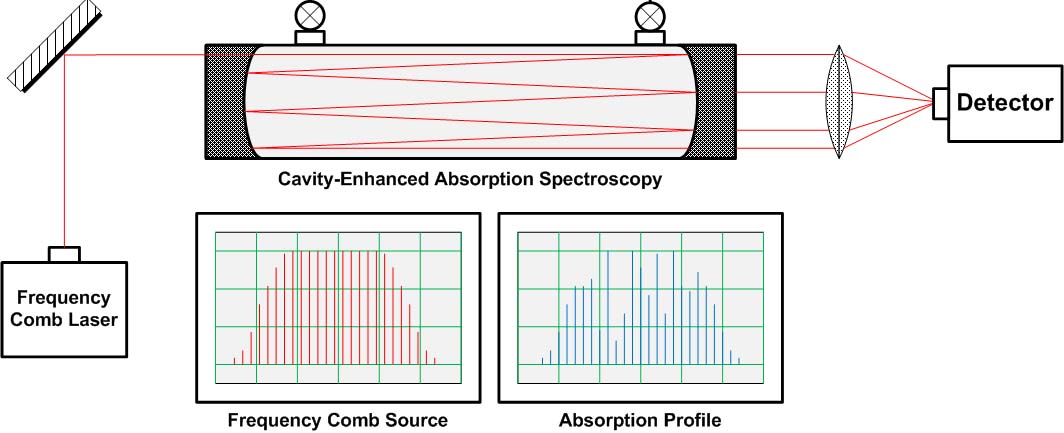
Objectives
- To demonstrate the feasibility of frequency comb sources for spectroscopic absorption.
- To build an in situ robust proto-type for multiple trace gas detection.
- To commercialise the product for end users.
- To improve existing industrial processes for gas detection.
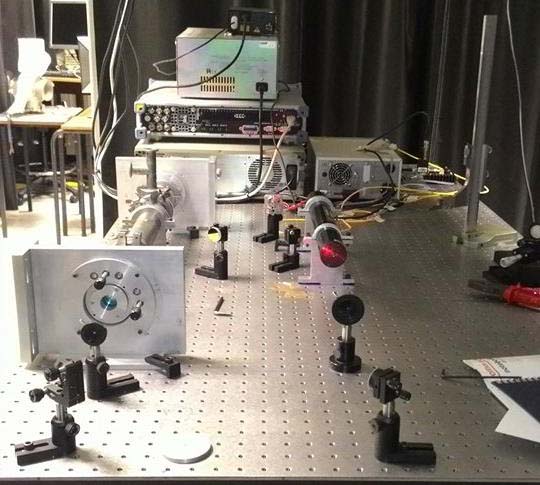
SFI TIDA Presentation
S. Chandran, S. Mahon, D. Gutiérrez, J. Braddell, F. Smyth, A.A. Ruth;
"Cavity-enhanced absorption detection of H2S in the near infra-red using a gain-switched frequency comb laser",
Photonics (International Conference on Fiber Optics and Photonics), Kanpur, India, 4-8 December 2016: Oral Presentation (#2589441).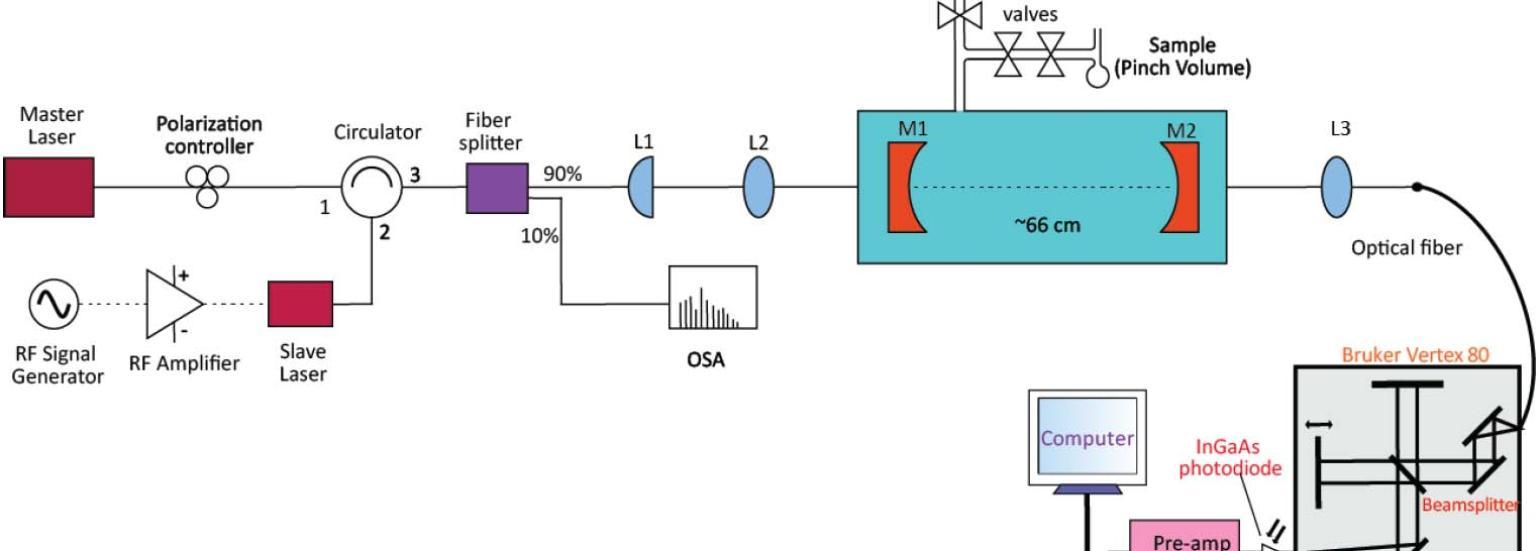 Schematic of the experimental setup. Mirrors M1 and M2 are dielectric mirrors with reflectivity (~0.997) forming a medium finesse optical cavity. L1 and L2 are the lenses used to collimate the gain switched frequency comb output to the optical cavity. L3 is the achromatic doublet used for focusing the cavity output to the optical fiber.
Schematic of the experimental setup. Mirrors M1 and M2 are dielectric mirrors with reflectivity (~0.997) forming a medium finesse optical cavity. L1 and L2 are the lenses used to collimate the gain switched frequency comb output to the optical cavity. L3 is the achromatic doublet used for focusing the cavity output to the optical fiber.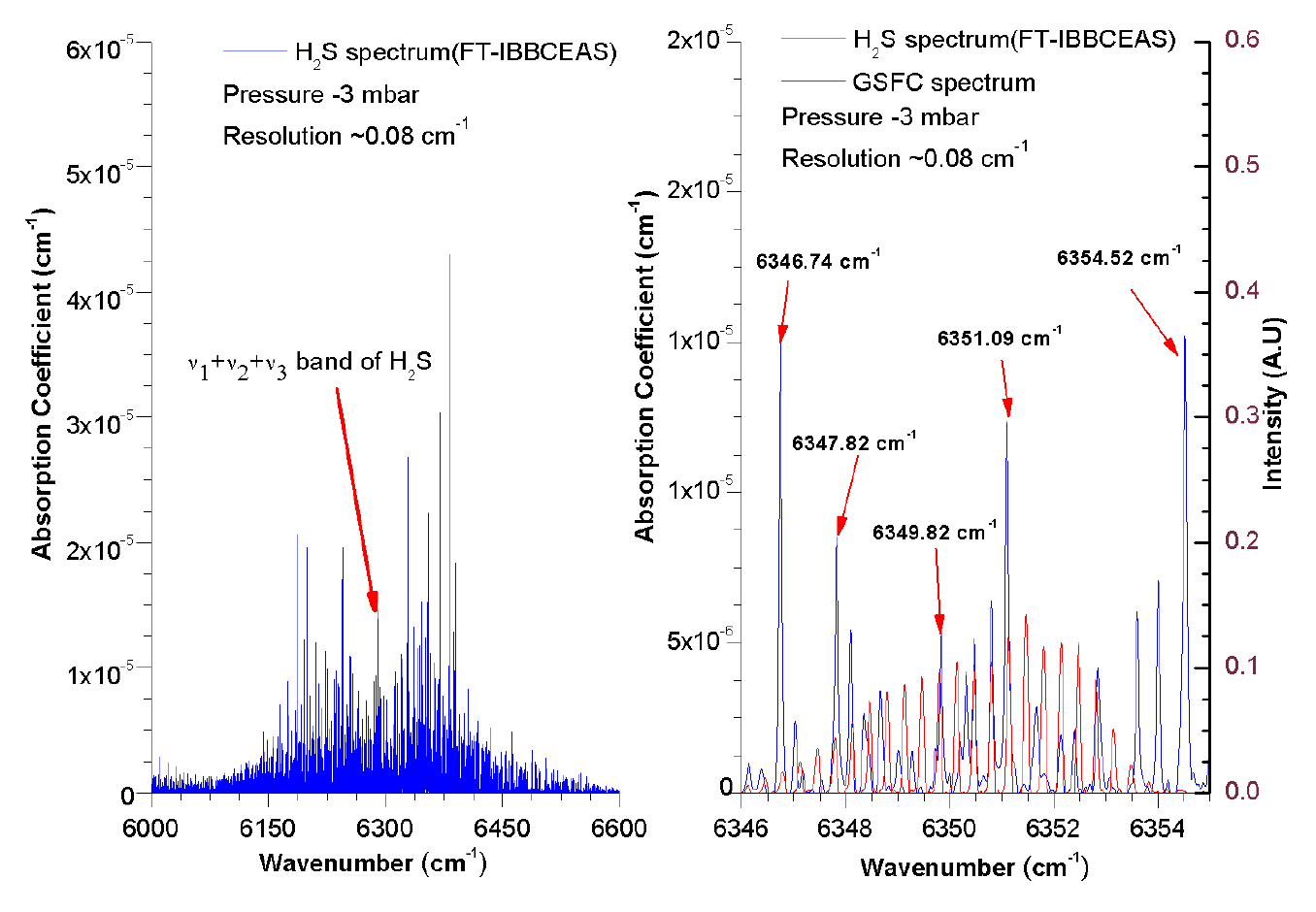 Left: The near IR absorption spectrum of H2S (ν=2.5 polyad) recorded at pressure 3 mbar using FT-IBBCEAS setup in the region 6000 - 6600 cm-1 with a resolution 0.08 cm-1.
Left: The near IR absorption spectrum of H2S (ν=2.5 polyad) recorded at pressure 3 mbar using FT-IBBCEAS setup in the region 6000 - 6600 cm-1 with a resolution 0.08 cm-1.
Right: Ro-vibrational lines in the R-branch of ν1+ν2+ν3 combination band of H2S (blue trace) in the region 6346 - 6355 cm-1. Also included is the frequency comb cavity transmission spectrum (20 lines, red trace), recorded with the same resolution
